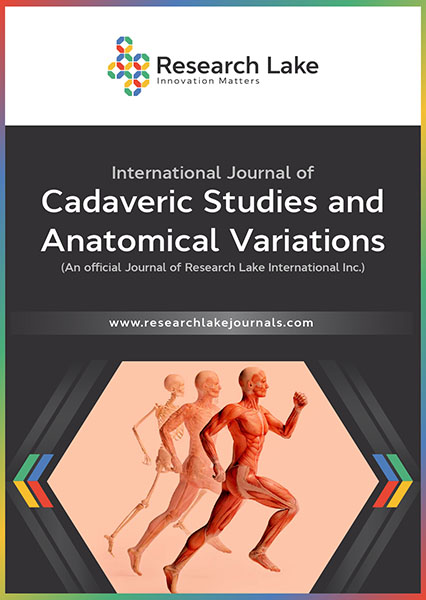Anatomical Association Between Articularis Genus and Vastus Medialis Oblique: A Cadaveric Investigation
Abstract
Objectives
The articularis genus (AG) muscle is thought to elevate the suprapatellar bursa during knee extension. Failure of this function may cause impingement of the bursa, and lead to anterior knee pain. The AG may work in synergy with the vastus medialis oblique (VMO) to fulfil this function. The AG and the VMO both attach to the vastus intermedius aponeurosis, and fibres of the VMO have been found to attach to the superficial layer of the AG. The VMO is also implicated in anterior knee pain, as VMO insufficiency can lead to patellar maltracking. The aim of the study was to investigate if an anatomical association could be shown between the AG and the VMO.
Methods
Twenty-nine lower limbs were dissected to show the muscles of the anterior thigh. The maximum VMO pennation angle and the VMO insertion ratio on the medial border of the patella were measured. The AG area was determined by measuring the length and maximum width of each individual muscle slip.
Results
The mean area of the AG was 2554.67 mm2. The mean VMO angle was 56.6°, whilst the mean insertion ratio was 48.93%. The association between area and each of the covariates was not statistically significant (VMO angle: P=0.921; insertion ratio: P=0.822). The mean area for the left leg was greater than that for the right (2876.12 versus 2233.22; P=0.049).
Conclusion
The articularis genus does not appear to have an anatomical association with the vastus medialis oblique. The dimensions of the superficial layer of the AG were not influenced by sex or age. However, the AG area was greater on the left limb than the right.
Copyright (c) 2020 Philip Adds, Komal Javed

This work is licensed under a Creative Commons Attribution-NonCommercial 4.0 International License.
Copyright © by the authors; licensee Research Lake International Inc., Canada. This article is an open access article distributed under the terms and conditions of the Creative Commons Attribution Non-Commercial License (CC BY-NC) (http://creativecommons.org/licenses/by-nc/4.0/).















